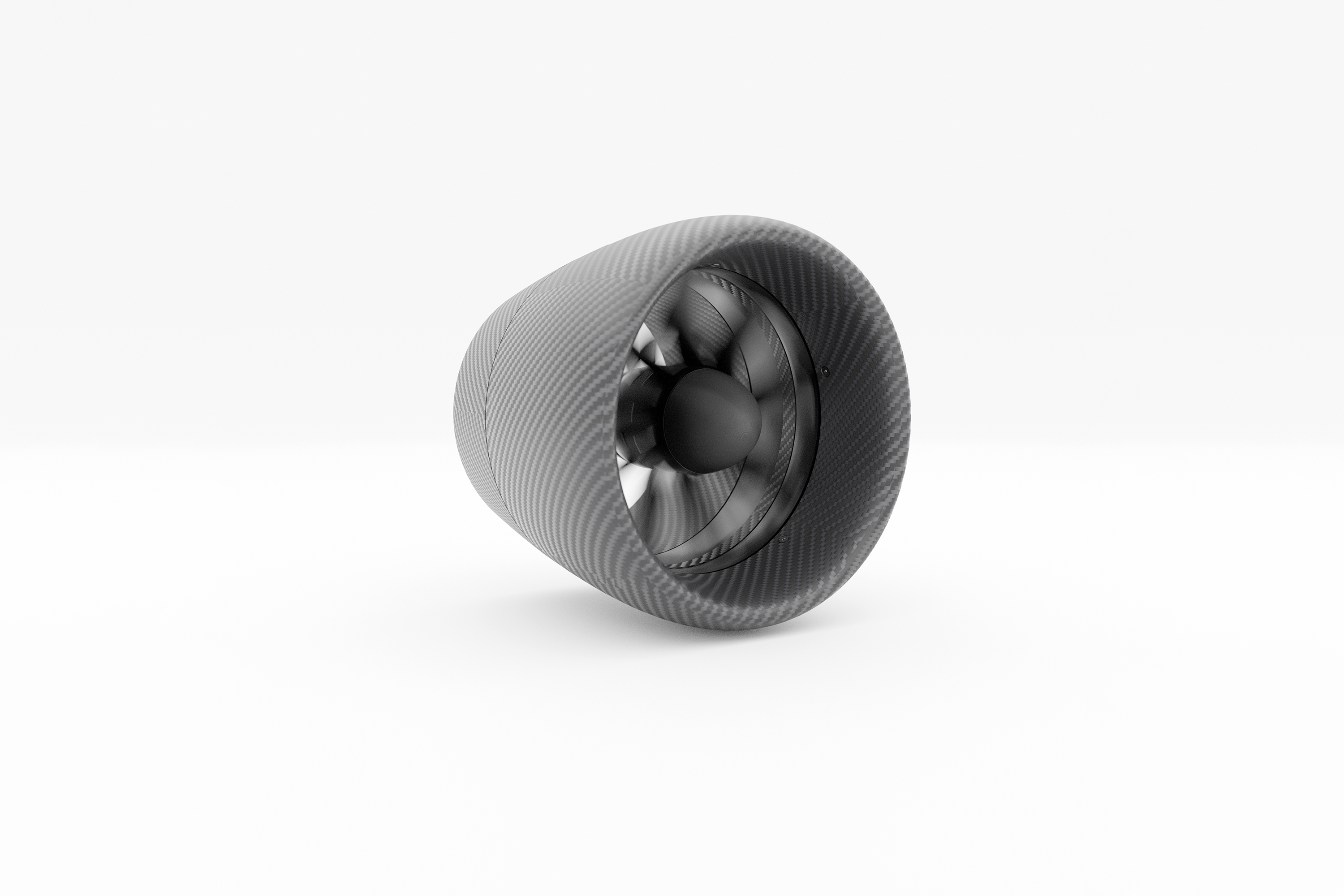Sycamore Propulsor Design -
Darren James
Darren James, Head of Airframe Integration at Greenjets:
Electric Ducted Fans (EDFs) have long been considered an intriguing yet under utilised propulsion technology. In spite of their clear potential, the common perception of EDFs as being inefficient, noisy and heavy have hindered their widespread adoption. For many years the evolution of EDF technology has been slow-paced, yielding minimal advancements in aerodynamics and structural design. However, a breakthrough is on the horizon with the introduction of our Sycamore engine family.

Sycamore 160-5 engines mounted to StriekAir's CarryAir UAV
Unlocking the Potential:
Traditional EDFs, akin to turbojets, move low volumes of air at high velocities, resulting in suboptimal propulsive efficiency. At Greenjets, we have challenged this paradigm with our Sycamore 160 propulsor. The mechanical and aerodynamic design of these units allow us to produce 5kgf thrust while drawing just a third of the number of watts consumed by conventional EDFs. Sycamore 160’s 160mm fan diameter outperforms larger 254mm diameter propellers, which produce less thrust per watt of input power. What's more, our propulsor boasts remarkable quietness and a feather-light weight of 750g, nacelle included.

Drawing inspiration from the advancements in gas turbine technology and architectures, the Sycamore engines optimise aerodynamic, propulsive and electrical efficiencies. When designing for maximum propulsive efficiency, one aims for the smallest feasible difference between jet velocity and flight velocity. This stresses the importance of tailoring jet velocity to aircraft cruise speed in the engine design process. Increasing fan area and therefore reducing fan loading, as well as tailoring fan speed for a given flight speed, are two more mechanisms for improving the aerodynamic efficiency of a propulsor. Aligning the above parameters with electrical motor characteristics will also bring about gains, this time in electrical efficiency.

The Greenjets Sycamore 160-5 propulsor
Versatile Aircraft Integration:
Sycamore engines offer a myriad of other benefits to aircraft integration, including noise reduction, payload integration and safety. Furthermore, they are incredibly accommodating to a range of aircraft configurations, mounting either via a pylon with a nacelle or in an embedded configuration. This configuration flexibility affords airframe designers an unmatched level of design freedom.
Unlike traditional propellers, Sycamore160’s small diameter allows for placement above the fuselage, mitigating offset issues between thrust axis and centre of gravity. This not only reduces pitching moment effects but also contributes to noise reduction.
Freedom in the axial placement of Sycamore 160 along an aircraft’s centreline gives aircraft designers the ability to balance the aircraft longitudinally while optimising for payload placement. This attribute has been exemplified in Striekair Engineering’s CarryAir UAV, where the shift from a puller propeller in the nose to Greenjets engines on the tail has allowed for improved payload positioning in the nose, lower noise, as well as improved aircraft performance & endurance. In addition to performance enhancements, Sycamore engines prioritise safety. With no exposed blade tips, they reduce the risk of accidents during operation and minimise entanglement risks, making them a safer choice for a wide range of operational environments.
Conclusion:
As we usher in a new era of propulsion, Greenjets engines stand as a testament to the transformative potential of Electric Ducted Fans - with groundbreaking advancements in efficiency, noise, and safety. The Sycamore engine family paves the way for a future where EDFs become the propulsion method of choice for innovative and sustainable aircraft designs.


